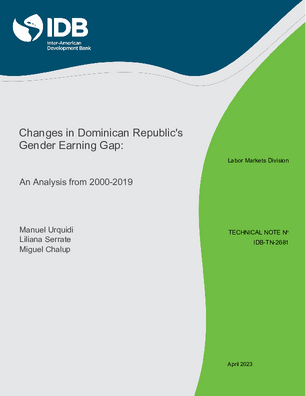Changes in Dominican Republic's Gender Earning Gap: An Analysis from 2000-2019
Date
Mar 2023
The gender earning gap in Latin America poses a significant obstacle to achieving gender equality and sustainable development. In the Dominican Republic, this gap is concentrated in the informal sector, among self-employed workers, and in regions with higher female labor force participation. Despite women often having a better labor profile than men, the gender gap persists, indicating the presence of gender biases. Potential factors contributing to this gap may include inadequate laws, cognitive biases, and relative childcare costs that often go unnoticed in society. To analyze the gender earning gap in the Dominican Republic between 2000 and 2019, we utilized the National Labor Force Surveys conducted by the National Statistics Office (ONE) and harmonized by the Inter-American Development Bank (IDB). We present two models for estimating this gap: the Blinder-Oaxaca decomposition and the Ñopo model. Despite a temporal analysis, we did not observe a clear trend of reduction or increase in the gender earning gap during the analyzed period. This suggests that additional efforts are needed to understand this disparity.
NO




